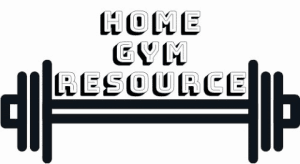Finding the right thickness for your gym flooring is like solving a puzzle that perfectly fits your workout needs. It’s a balancing act between what’s underneath, which material floor you choose, and how you lift those weights. Let’s dive into the world of gym flooring thickness and discover the perfect fit for your fitness haven
For most people, 3/8″ or 1/2″ rubber mats work best as gym flooring. Foam tiles should be thicker (3/4″ or 1″) for structure and longevity. If you have a large gym and often drop weights on the floor, having thicker flooring just in the spot where the weights touch the floor is a good idea.
The thickness of gym flooring depends on two factors: what’s underneath the flooring and how you lift weights. Generally, the heavier the impact on the floor, the thicker the flooring should be. Let’s get into what that exactly means for your situation.
Contents
How Thick Should Gym Flooring Be?
Gym flooring is available in different thicknesses. The most common thicknesses are 3/8″, ½”, ¾”, and 1”. Which size is right? It depends on two things. What’s underneath your gym flooring and how you lift.
In general, the heavier the impact on the floor, the thicker you want the flooring to be. So if you’re lifting heavy and dropping it on the floor, you want thicker flooring than if you’re doing Yoga. However, for most purposes, you don’t need very thick gym flooring. Most people will be best off using 3/8″ or 1/2″ rubber mats.
You can find recommendations for amazing home gym flooring products for different situations.
If you’re using foam gym flooring, you need to go thicker since foam is softer and you’ll reach the bottom faster. Thin foam also tends to break up fast and the thicker ones have some structure and last longer. Thicker foam is also less likely to slide and get ‘unpuzzled’. For foam tiles 3/4″ or 1″ is best.
However, there are some factors that might mean you should use a different thickness. Let’s dig in to see when you should go thicker or thinner.
Read more about the different types of gym flooring here.
What’s underneath?
What is right for you it largely depends on what you put the flooring on top of.
Carpet/Vinyl
If you got something underneath that’s already soft but not too squishy like short carpet or thick vinyl, it’s good to use a thinner gym flooring. The two layers combined will mean it provides enough impact resistance and damping.
However, you want to be careful that it doesn’t get too soft.
For example; you’ve got a thick carpet with foam underlay and want to put gym flooring on top? A thin gym floor might become unstable to stand on. A thicker mat will compress the carpet more and it bends less which means more stability.
Read here how gym mats protect the flooring underneath.
Concrete
If all you have is a concrete floor, it depends on how even the floor is. If it’s a smooth concrete floor, a pretty thin mat is enough and you just pick a thicker one if you want more impact resistance. 3/8″ rubber is fine for over concrete but you can go thicker for more impact resistance and damping. Of course you can also only use the thicker mat in the spots where it’s necessary.
Some concrete floors can be quite rough with some smaller bumps and holes, however. In that case, a thicker mat will smooth out the floor much better, giving you a more even surface.
Foam
Of course, it also depends on which material flooring you use. If you’re using foam tiles, it’s better to go thicker. Foam is softer than rubber. That means you’ll need more of it to absorb the impact of your weights. For foam 3/4″ is the minimum thickness you’ll want to use.
With rubber mats or tiles you can go a bit thinner to get the same protective effect. The drawback is that you might have less noise damping with the thinner rubber mats. For rubber mats you can go down to 3/8″ thickness. This will protect your floor and equipment but might have less noise damping as said.
How do you lift?
If you’re lifting light to medium weights and putting them down softly, your floor has to endure a lot less than if you’re dropping heavy weights from overhead.
If you’re easy on your floors and equipment, you’ll be able to get away with a ½” foam floor tile. The impact of putting down a medium weight is so much smaller than dropping a heavy weight overhead, the floor has to do a lot less. Absorbing impacts is one of the purposes of a gym floor after all.
For dropping heavy weights, you’ll want to go up to ¾” or 1” thick flooring tiles. For extra protection you can put some extra plywood underneath the floor where you often drop your weights.
It depends how big your gym is though. If you have a large gym, you can use thinner gym flooring all over the gym and then add something extra where you lift weights. You’ll just have a small ledge in that spot which you have to be careful of.
In a compact home gym, you might as well go for the thicker flooring everywhere. It won’t cost that much more and look a lot less messy.

